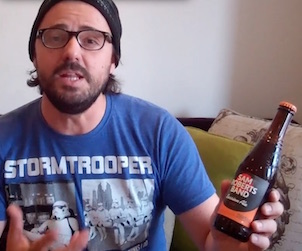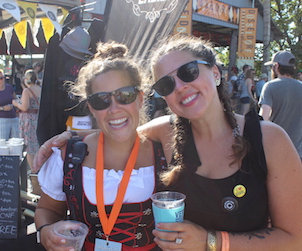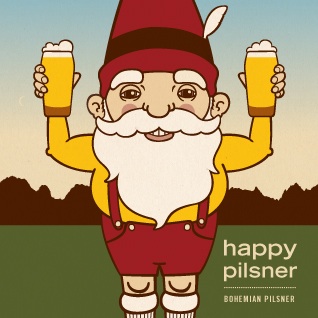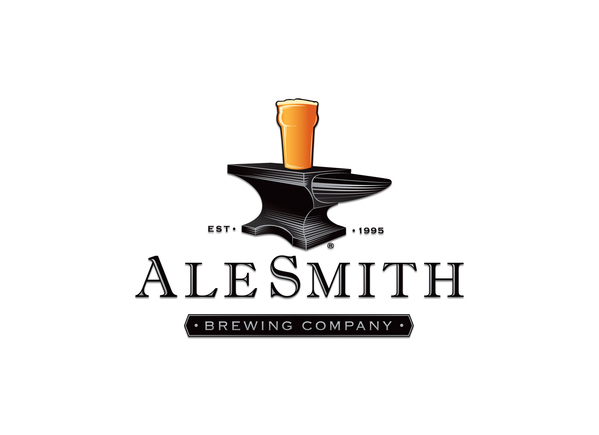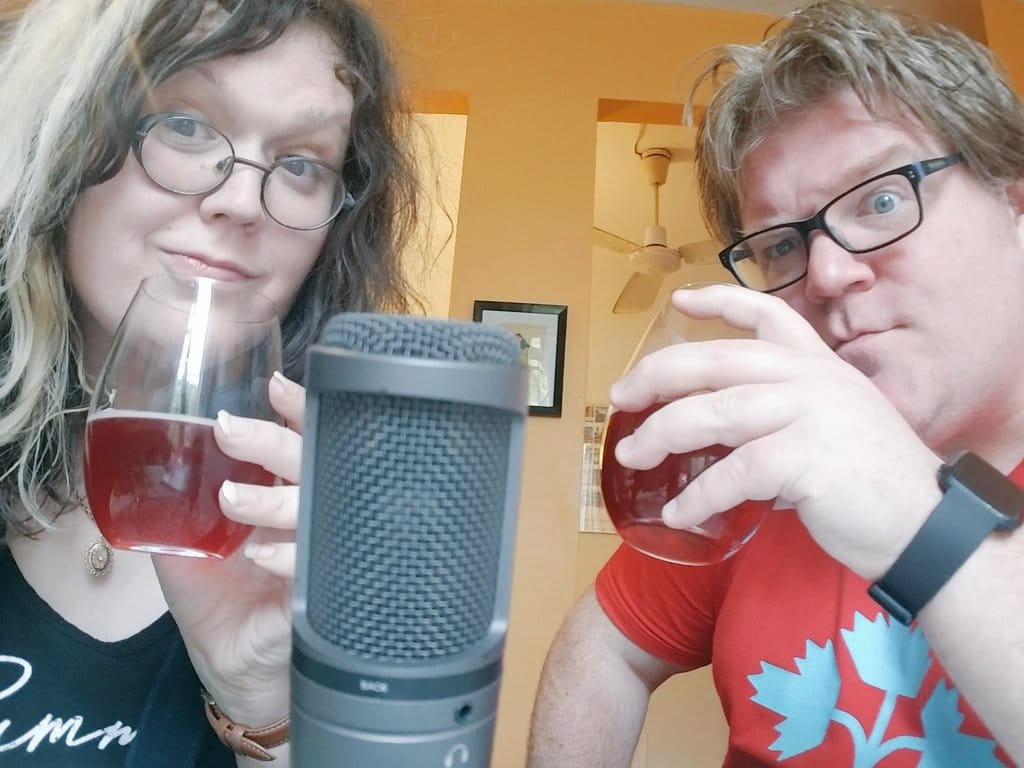
Kicking off their inaugural column, It’s Your Round, in style, it’s Robin LeBlanc and Jordan St. John.
After contributing a couple of introductory pieces, acclaimed beer writers Robin LeBlanc and Jordan St. John grace these pages with the very first of their monthly It’s Your Round columns.
Jordan St. John: I don’t know about you, Robin, but I’ve got real problems with Dry January.
Robin LeBlanc: I’m in full agreement with you, Jordan. All of winter is pretty dry and the desert climates are mostly ignored. Why just talk about the concept of dryness in January?
Jordan: Moisturizing is important, but that’s not what I’m talking about. I’m talking about how it’s become so commercial. It used to be that Dry January was a simple premise; holiday revelers had overindulged on figgy pudding and brandy on the lead in to New Year’s Eve when they got completed obliterated on cheap Prosecco, and then they decided to slow down for a month or so of their own volition.
Robin: Not a bad idea if you spent the holidays being mostly full of alcohol and cheese. Nothing wrong with slowing down a little and maybe even taking a look at your relationship with sweet lady alcohol.
Jordan: Abstemiousness is a good thing. If you work with alcohol in the long term, your choices are several days off a week or really significant personal difficulties. If you get to the point where you’re considering cutting back, you are absolutely at the point where you should cut back. That’s not the problem I have with Dry January.
Did you notice it came out of nowhere about a decade ago?
Robin: Yes! If memory serves, it was started in 2012 by the charity Alcohol Change UK. I think it was originally conceived when one of its members was abstaining in preparation for running a marathon and it sort of caught on from there.
Jordan: Which means that Dry January is nearly as influential as an ancient Greek messenger.
That’s the problem I have with it: Influence. It’s purely a social media phenomenon. Did you know that in Canada, we’re officially meant to celebrate Dry February? It’s part of an appeal on behalf of the Canadian Cancer Society. Social media is so pervasive that people have jumped the gun because of a hashtag.
Robin: We’re in the age of social media holidays and observances, though, and no one is obliged to take part in them if they don’t want to. Hell, February 9th is National Pizza Day and while I’m sure folks won’t take part in it, I’ll jump at the chance to order some ‘za.
Jordan: Well, this is the issue. There are entire product lines that exist because of the hashtag. In the same way that you crave a pepperoni slice on February 9th, there are people who purchase non-alcoholic beers on the basis that they think they ought to, as though splitting the difference between drinking and not drinking is a necessity. They’re so invested in drinking that the thought process stretches only as far as a simulation, and not quite as far as not drinking at all.
Robin: So let’s talk a bit about the products themselves here for a bit. Non-alcoholic beers are nothing new and I think an argument could be made that the demand for them was rising long before sobriety months came along. An issue I have though is that despite the increase in products there aren’t many North American examples that would have me choosing it over an alcoholic beer or even a glass of water. England has some stellar examples including Big Drop Brewing and the Ghost Ship Pale Ale by Adnams. Germany seems to be where they perfected the craft of non-alcoholic options (the NA Weihenstephaner is practically the same in profile as the original), but when breweries this side of the pond give it a try I find the beers sort of… lacking.
Jordan: As someone on his third Sodastream lifetime, I hear you. I think the difficulty is that there’s a weight of expectation on the non-alc products that is fundamentally unfulfillable. Consider that a pint of 5% beer is typically around 250 calories. A lot of that is made up by alcohol. Removing the alcohol (or indeed mashing at a low temperature) removes a lot of body, texture, and balance from the resultant product. What you tend to end up with is the most recognizable notes without any of the texture. It’s like a music student plunking away at a fake book. You can almost hear “Take Five,” but the time signature is wrong.
Robin: I’m with you on the unfair expectation that’s put on non-alcoholic products. Honestly, while I get the appeal of trying to resemble a thing for people who might not want to feel like they’re missing out, I think people’s taste buds might be served better if the pretense was done away with and non-alcoholic drinks just tried to be more elevated. Like, over here in Ontario I know that we go on about Spearhead Brewing’s Akwa and Wellington Brewing’s products that just incorporate hops into carbonated water. Still have that beer kind of feeling, but without the sugary disappointment.
Jordan: I think it’s part of a larger problem craft beer has with simulation. We have New England style IPAs that are essentially Mango Juice. You know what tastes a lot like Mango Juice? Mango Juice. The hop water, at the very least, is just showcasing an ingredient in a way that allows it to shine.
There’s one other problem I have with non-alc beer. I was making notes on a few recently for an upcoming piece, and they have nutritional information and ingredient information listed on the can (although somehow not the hop varieties). This significantly reduces the ability of brewers to keep up with novelty in the craft beer market. You can’t really do a one-off in a batch size smaller than “enormous,” and maintain that labelling stricture. It essentially means they’re always going to be years behind stylistic trends.
Robin: I get that, though, since the brands are trying to replace a spot in the fridge one would normally reserve for their old stand-by. Plus as far as trends go, I think it’s perhaps a good thing to stick to the ones that have withstood the test of time like hazy IPAs.
Jordan: What it means, from a practical standpoint, is that you’ve decided to take a month off drinking and instead of choosing from any of the world’s thousands of other beverages, the decision has been made to go with something that cannot by definition be as good as the thing you’ve given up, but which will vaguely remind you of that thing. It’s not even less expensive. It’s like you’re taunting yourself and paying for the privilege.
Robin: I guess, but personally I’m for these products existing beyond a month-long sobriety trend. The reasons people go sober, either permanently or temporarily, are varied and I’m not going to pass judgement on someone who might need that reminder of what it once was. Though I feel like we’re in agreement that when considering non-alcoholic options there are some incredible options out there that manage to feel both hip and adult. We’re a long way away from cranberry juice, thank the gods.
Goodness, all of this talk about Dry January is making me rather thirsty. Care for a drink, Jordo?
Jordan: Do you have a Diet Dr. Pepper?



